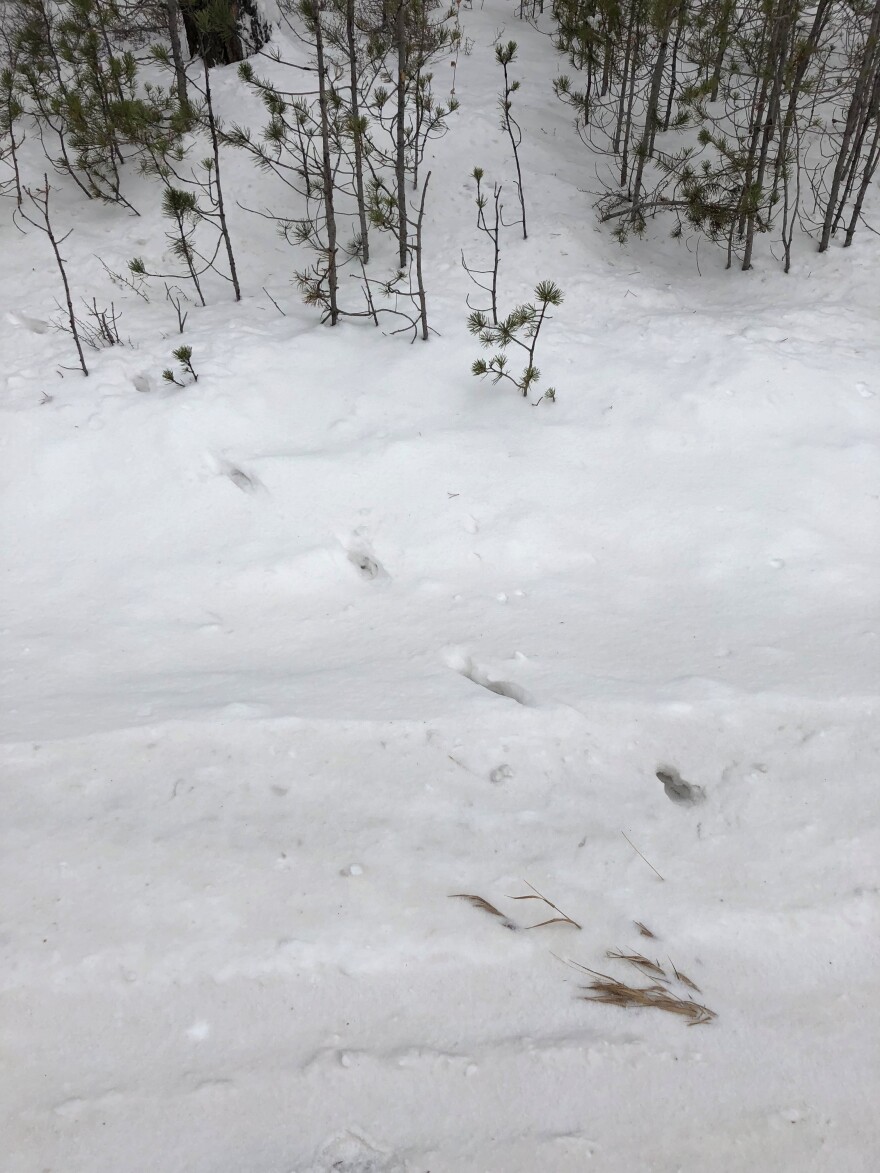In 2006, Montana granted permission to two tribes to hunt on federal public lands near Yellowstone National Park. This was due to a treaty that was agreed upon in 1855 that includes tribes from the Pacific Northwest. The Yakama Nation is the first tribe from Washington state to join in on the hunt. Those tribal members drew tags in November and recently traveled to Yellowstone to exercise their right to hunt buffalo on public land for the first time.
On a cold, gray December morning, Kris Johnson and Hunter Old Elk drove slowly along a snow-covered path looking for Rainbow Point Road. They’re trying to find where they are according to a map of West Yellowstone area.
Johnson, Old Elk, and another family member, Jeffrey Sampson, are part of a group taking their first attempt at hunting for buffalo. Sampson drew a tag from the Yakama nation pool to hunt back in November. He has 31 days to use the tag.
“I just felt it was a big interest to be part of that [first off-reservation hunt],” said Sampson. “And preserve this right for the future generations as they came forward.”
When the United States marshaled tribes onto reservations, treaties were drawn between the sovereign nations. During the 1850’s a handful of tribes in the Washington territory signed a general template known as Steven’s treaty that included the right for the tribe to hunt and fish on federal public lands such as Forest Service and Bureau of Land Management lands.

Today, buffalo don’t roam the plateau in Washington state, which is why Old Elk and Johnson are driving around Yellowstone scouting for buffalo that they hope to hunt outside the park. According to Johnson buffalo tracks are usually easy to spot.
“One thing about buffalo,” Johnson said. “If you watch in the snow, their legs aren't long so when they leave, they spread the snow and you know it’s a buffalo because the snow will be spread out.”
Suddenly, Old Elk stopped the car. She peered out behind her at the snow-covered roadside and they both get out. They walked over to the side of the road. Johnson looked down and shook her head.
“Those are tracks,” said Johnson. “But you see the feet those are just footprints hooves. No, a buffalo’s going to be this. The spread is going to be all pushed out because he's pushing snow out in front of him.”
As Johnson and Old Elk turned back around at the end of the road. They passed a man on a snowmobile.
“Oh did you see that?” exclaimed Johnson. “F*** you. That's what he said. He mouthed it pretty clear.”
The controversy is hard to ignore. Although it is within the tribe’s right to hunt buffalo, not everyone agrees that hunting is the best way to manage the buffalo herds. Supporters believe it is an effective way to control their population and the diseases they carry. But opponents such as the Buffalo Field Campaign argue there are still not enough buffalo. Mike Mease of the campaign said buffalo need to be able to roam free.

“It’s not about the buffalos future,” Mease said. “It’s about making sure the buffalo have a future other than their reservation known as Yellowstone.”
Buffalo wander out of the park during harsh winters in search of food. Due to the lack of snow this year, the buffalo weren’t pushed out of park keeping them from being hunted by the group. But the trip was more than just getting a buffalo. Sampson said it was about the Yakama nation’s ability to exercise their treaty rights and preserve the culture of hunting and gathering.
“We're a dying generation and we try to preserve what things we can that's valuable amongst our culture,” Sampson said. “And this is one of the things I think my children are valuing it.”
The Yakama tribal council extended Sampson’s tag for another couple of weeks but he doesn’t think he’ll find the time or money to go out to West Yellowstone again so soon. But maybe, he’ll go out again next year.







